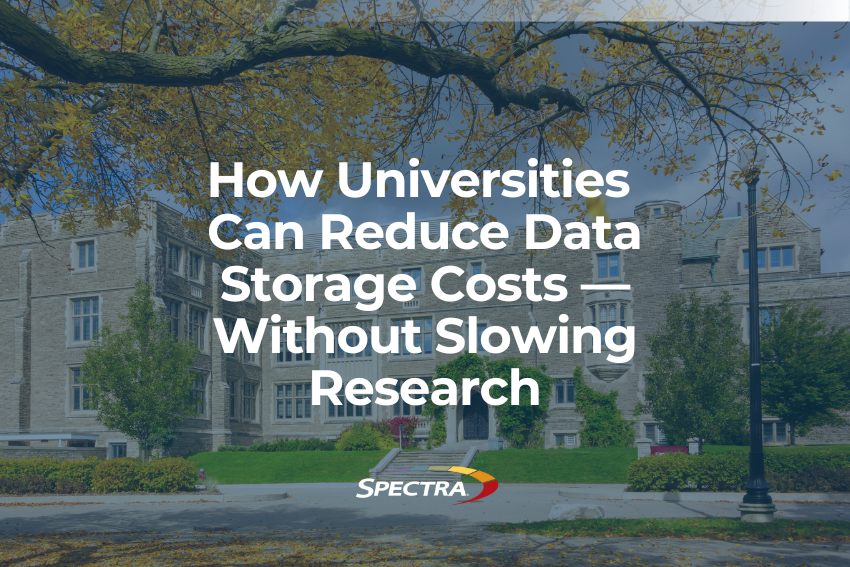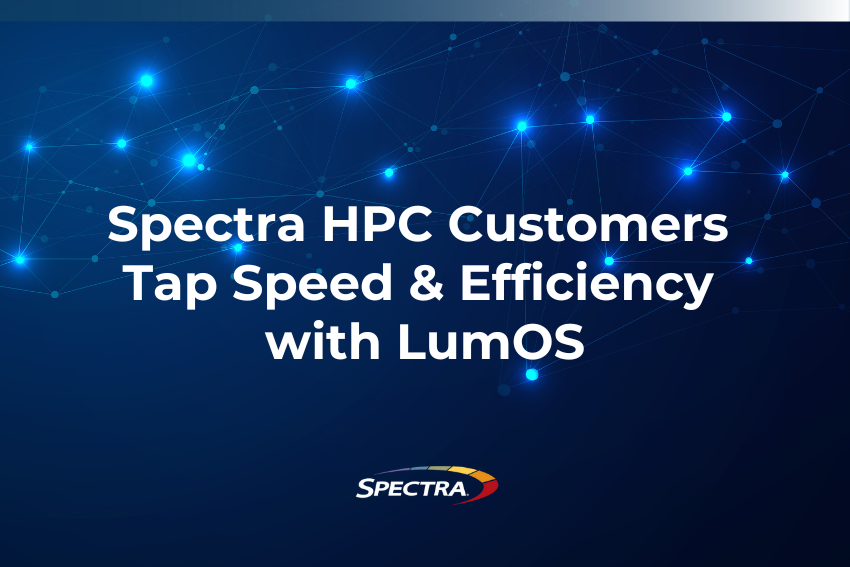In today’s digital era, organizations are generating data at an unprecedented rate, making long-term data storage a crucial aspect for businesses of all sizes. Among the various storage options available, customers have an added choice of whether to store their data in the public cloud or on-premises (on-prem). The question begs to be asked, “Which is the best choice?” The answer is, “It depends.” Both approaches have their merits.
When choosing between public cloud and on-prem storage solutions for long-term data retention, key factors are the amount or “scale” of data to be retained, time to access data, and disaster recovery or security measures. By evaluating these areas, users are better able to make strategic decisions on storing long-term data that meets their intended goals that are also financially sound.
Based on these inputs, organizations might consider the benefits of adopting a hybrid cloud strategy. Certain applications and compute needs, well served by Software as a Service (SaaS) models, may be a better fit for the cloud, while long-term storage needs may be better suited to a compatible cloud infrastructure designed for specific storage needs. Spectra has introduced Spectra Object-Based Tape, a flexible, cost-effective, no-surprise fees solution specifically for storing data at scale.
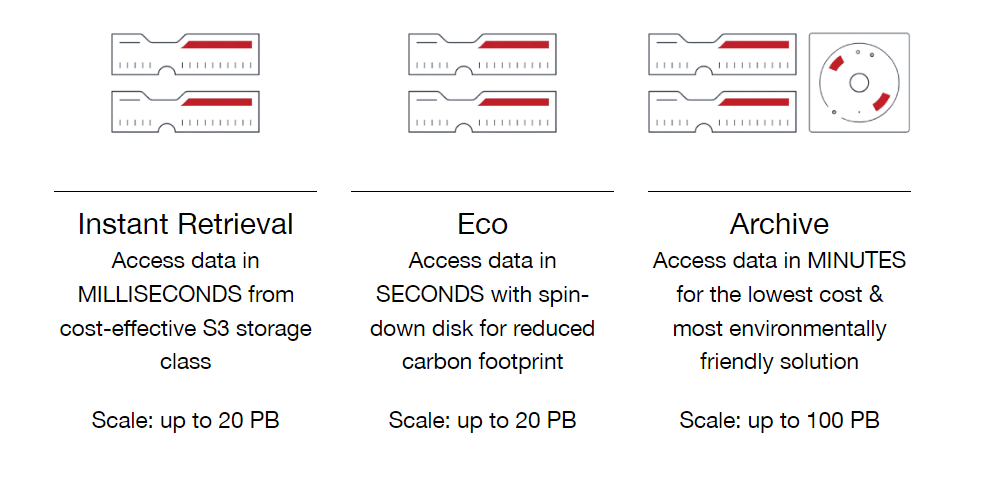
Scale of Data: Cost Implications
When evaluating long-term data storage options, the scale of data plays a significant role in determining the most cost-effective solution. We all back up our smartphones to the cloud. It’s a small amount of data that isn’t accessed often. But if we look to the other extreme, 100’s of terabytes to multiple petabytes, storing such large volumes of data on-prem usually proves to be more affordable than using public cloud storage. This is particularly true when data retention spans over an extended period. This is where this debate’s true cost savings become clear.
Consider, for example, a research organization preserving data with a “no-delete” policy or a film production company storing raw footage that cannot be recreated. In these examples, an archive is used to ease the burden on faster primary storage systems and is created at a single point in time – either the beginning of a project or when the associated project has been completed.
Let’s compare costs for storing a single copy of data in AWS (Glacier Flexible Retrieval Class) versus two copies of that same data in a Spectra Object-Based Tape tier. The below example shows a 3PB archive, assuming a modest average access rate of only 2% per month and zero growth for the duration of the project.
Object-Based Tape offers more than 300% savings over AWS Glacier
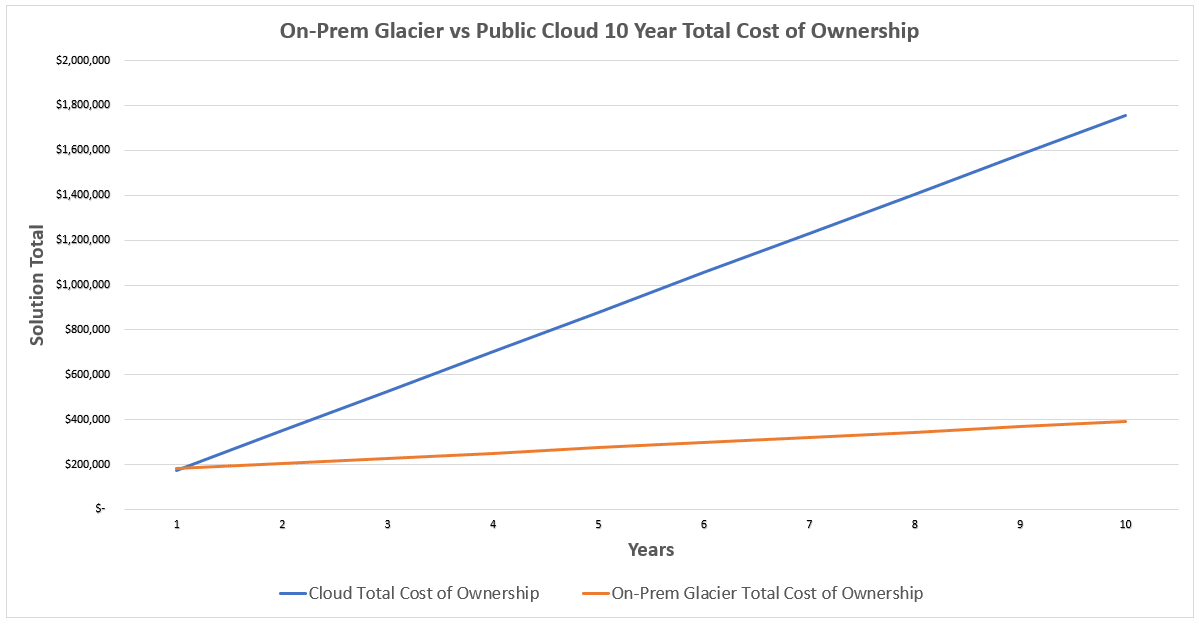
Given the length of time that data will be retained, a key comparison is the economic benefit of a traditional CAPEX business model versus a cloud consumption model. In the example shown, with a somewhat modest amount of data, customers would break even on the cost of their investment for Object-Based Tape in the first year. It then becomes evident how the economic value accelerates as time goes on. With specific businesses requiring data to be retained for well over 10 years, one can imagine the significance of the economic impact.
Access frequency (how often data is brought back) can significantly impact the cost of storing data in the cloud as well as create unpredictability in expenses. The Object-Based Tape solution has no retrieval costs, so there are no unexpected expenses.
To help make sense of it all and get true comparisons between “in-cloud” Glacier and “on-prem” Glacier, Spectra has created a calculator allowing storage amount, class, duration, and average access to be input according to your specific needs. A Spectra Solution Architect is available to walk you through this calculator using your own inputs and show a detailed breakdown of cost for each solution on a yearly and cumulative basis.
Access time:
While time-to-data, or access time, isn’t typically viewed in terms of dollars invested or saved, it is a cost with storing data in the cloud. Amazon’s three classes of Glacier data storage are priced according to how quickly (or slowly) one chooses to access their data, as shown in the below image. This is in addition to the charge per terabyte of retrieving the data.
For AWS Glacier Flexible Retrieval, access to data ranges from a matter of minutes up to 12 hours. The most affordable class of storage offers access to data anywhere from 12 to 48 hours.
In contrast, Spectra Object-Based Tape tiers provides instant retrieval access in mere milliseconds, a tier-2 option in seconds, and an archive class within minutes.
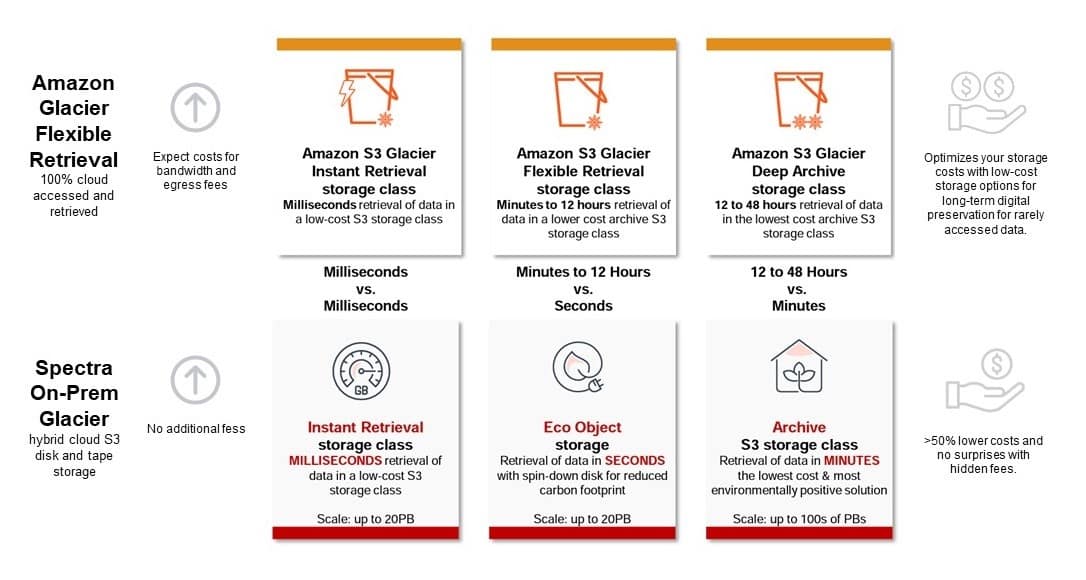
Object-Based Tape access times are significantly faster, and there are never any fees for data retrieval.
Disaster Recovery and Ransomware protection:
In today’s world, an effective disaster recovery program is paramount to business continuity. It must cover more than natural or man-made disaster – It must also protect data in cases of ransomware attack.
Object-Based Tape provides significant benefits. From creating air gap copies to protect from ransomware attacks to offering multiple protection and recovery options that span from ejecting tape to store in a vault, the most cost-effective, to automatically replicating copies of data to a deep Glacier layer in the cloud or to a remote Spectra Object-Based Tape. As always, it becomes a matter of choice.
While egress fees make performing a disaster recovery from the public cloud expensive, ransomware brings an even more impactful dimension to the mix. The facts are staggering – 93% of ransomware attacks targeted backup repositories in 2022, and there was a 75% chance those attacks were successful.* If there’s electronic access to your data, malware is designed to find it. Object-Based Tape’s ability to create a true air gap eliminates this possibility. Period. Even for those who chose to pay the ransom – a surprising 80% of respondents – 21% of them still could not retrieve their data.* A clean, immutable, air-gapped copy of your data is the best guarantee of recovery after such an attack.
Summary
Whether you’re driven by cost, accessibility, usability, or assuring the safety of your data, Spectra’s Object-Based Tape offers an approach to long-term storage worth exploring.
Contact us today if you’d like to schedule a demonstration of the cost calculator using your exact criteria to see how Spectra Object-Based Tape solutions can help improve performance and significantly lower costs.
References:
1: 2023 Global Report, “Ransomware Trends – Lessons learned from 1,200 victims and nearly 3,000 attacks,” Ransomware Trends 2023 Report (veeam.com)


